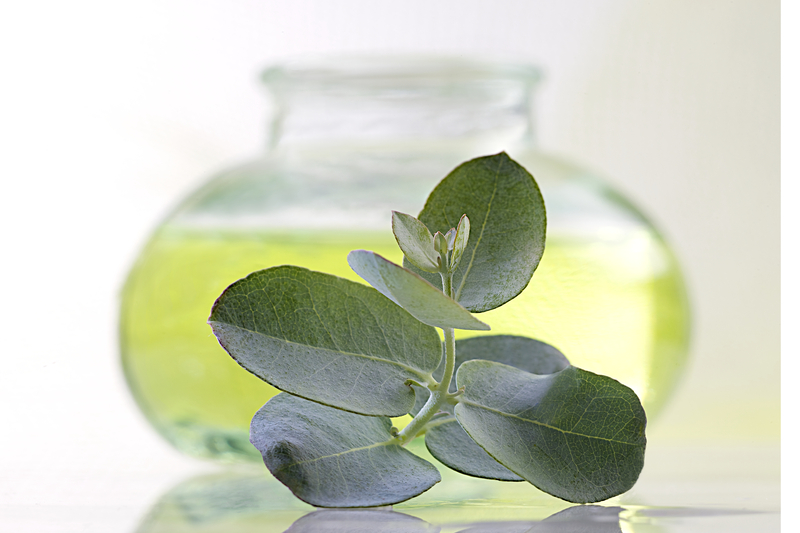The Ultimate Method for Cleaning Curtains Correctly
Posted on 12/06/2025
The Ultimate Method for Cleaning Curtains Correctly
Maintaining clean curtains is paramount for a healthy and attractive household. Dust, allergens, and lingering odors can accumulate in your drapes, making them look tired and posing health risks. Yet, many homeowners neglect curtain cleaning because they don't know the optimal way to do it. If you've pondered the best ways to get your drapes spotless and fresh, this comprehensive guide will reveal the ultimate methods for cleaning curtains correctly. Read on for proven techniques, professional tips, and frequently overlooked details that will transform your window treatments!
Why Cleaning Curtains the Right Way Matters
Curtains act as a filter for sunlight, dust, pollen, and airborne debris. Over time, this leads to:
- Visible stains and discoloration
- Accumulation of dust mites and allergens
- Lingering odors
- Decreased air quality inside your home
Ignoring curtain cleaning can even reduce fabric lifespan, forcing you to replace your drapes sooner than necessary. Instead, adopting effective curtain cleaning routines extends their life and enhances your living environment.

Understanding Curtain Fabrics: The Foundation of Proper Cleaning
Not all curtains are created equal. Fabric type directly influences how you should wash, clean, and maintain your drapes. Consider the following common materials and their specific care requirements:
- Cotton Curtains: Durable and usually machine washable. May shrink if washed in hot water.
- Linen Drapes: Require gentle handling; should be dry-cleaned for best results.
- Silk & Velvet: Delicate and often dry-clean only. Seek professional help.
- Polyester: Stain-resistant and lightweight. Typically machine washable.
- Heavyweight Fabrics (Blackout, Thermal): Usually lined, requiring special care to avoid damaging the backing.
Always check the manufacturer's label before proceeding! Knowing your fabric type is crucial for cleaning curtains correctly and ensures you avoid permanent damage or shrinkage.
The Ultimate Step-by-Step Method for Cleaning Curtains Correctly
Let's break down each part of the best method for curtain cleaning, from basic maintenance to deep-cleaning results that rival professional services.
1. Regular Maintenance: Weekly Dusting & Vacuuming
Frequency: Once a week
- Use a handheld vacuum with a brush attachment or a lint roller.
- Close the curtains fully and gently vacuum from top to bottom.
- Focus on pleats, hems, and edges -- areas where dust gathers.
- If possible, shake them outdoors for additional dust removal.
Why it matters: Routine dusting prevents buildup that can later lead to odors, allergies and heavy soiling, making future deep cleaning easier.
2. Spot Cleaning: Handle Stains Immediately
Spills and stains should be tackled ASAP to prevent permanent marking. Follow these steps:
- Blot: Gently dab the stain with a clean, damp cloth. Never rub -- it may spread the stain or damage the fibers.
- Test a cleaner: Try a small amount of mild detergent on an invisible area to check for colorfastness.
- Apply solution: Use diluted detergent or a specialized stain remover as appropriate for the fabric.
- Rinse & dry: Wipe away cleaning solution with a damp cloth and allow the fabric to air dry.
Don't use bleach unless specified safe for your fabric -- it can cause discoloration or degradation.
3. Deep Cleaning: The Ultimate Guide for Each Curtain Type
For machine-washable curtains:
- Remove all hooks, rings, and hardware.
- Shake curtains outdoors to remove as much dust as possible.
- Use a gentle cycle with cold water and a mild, dye-free detergent.
- Wash curtains separately from other laundry to avoid tangling.
- Hang curtains back immediately while damp to minimize wrinkles and shrinkage.
- If necessary, use a cool iron to smooth out any creases.
For delicate, lined, or heavy curtains:
- Dry clean only. Professional cleaning is recommended to prevent damage.
- If dry cleaning at home (using home dry-cleaning kits), test on a small section and strictly follow product directions.
For curtains with non-removable hooks or hardware:
- Try steam cleaning -- hang the curtain and use a garment steamer or steam cleaner from top to bottom.
- This removes dirt, freshens the fabric, and kills mites and bacteria without removing the drapes.
- Let the fabric dry completely before closing or bunching to avoid mildew.
4. Cleaning Sheer Curtains and Net Drapes
Sheer and net curtains require gentle handling and frequent washing as they tend to attract dust and yellow over time.
- Place sheers in a mesh laundry bag to prevent snagging.
- Wash with cold water on a delicate cycle, using a mild detergent.
- Rehang while damp to preserve their shape and avoid creasing.
- For hand washing, soak the curtain in cold, soapy water, then rinse thoroughly and dry flat or hung.
- Never wring out sheer fabrics; this can damage their delicate structure.
Professional Tips for Ultimate Curtain Freshness
- Use Baking Soda or Vinegar: For stubborn odors, add half a cup of baking soda or a splash of white vinegar to the wash cycle.
- Sunlight for Natural Freshness: Hang curtains outdoors (weather permitting) for natural deodorizing and brightening effects.
- Guard Against Mold: Never hang curtains in humid conditions; ensure they're fully dry before replacing them.
- Iron While Damp: For the smoothest finish, iron cotton or linen curtains on a low setting while still slightly damp.
Frequently Asked Questions About Curtain Cleaning
How often should I clean my curtains?
For most households, deep cleaning curtains every six months is optimal. In high-dust or allergy-prone environments, quarterly is ideal. Weekly dusting is always recommended.
Can I use a washing machine for all curtain types?
No. Always refer to the care label. Only machine-wash curtains marked as wash-safe. Delicate and lined drapes should be dry-cleaned or steam cleaned to prevent shrinkage or damage.
Is it better to wash curtains or have them dry cleaned?
The ultimate method for cleaning curtains correctly depends on fabric, lining, and manufacturer instructions. When in doubt, professional dry cleaning ensures safety for delicate or valuable drapes.
What about blackout or thermal curtains?
Special caution is needed. Never soak or machine wash unless the care label permits. Spot cleaning and light steam cleaning are usually best.
Common Mistakes to Avoid When Cleaning Curtains
- Ignoring the care label: Always follow the manufacturer's washing and drying instructions.
- Using harsh chemicals: Steer clear of bleach and abrasive cleaners unless explicitly recommended.
- Over-washing: Too frequent washing diminishes fabric integrity, especially for delicate drapes.
- Forgetting hardware: Always remove hooks, rings, and weights before washing.
- Not drying properly: Damp curtains can develop mildew and odors. Hang immediately in a well-ventilated area.
Eco-Friendly Curtain Cleaning Hacks
Most effective curtain cleaning doesn't require chemical-laden detergents. Try these green solutions for safe, sustainable curtain care:
- Lemon juice: Adds light whitening and deodorizing for light-colored curtains.
- Baking soda: Naturally neutralizes odors and softens water.
- White vinegar: Helps break down grime and combat static cling.
- Essential oils: Add a few drops to your wash for a subtle, natural fragrance.
Remember to spot test all home remedies and never mix baking soda and vinegar in the same wash cycle.
How to Keep Curtains Looking Fresh Between Washes
- Shake curtains out regularly to remove dust.
- Use a fabric freshener spray.
- Try a handheld garment steamer for quick refreshes.
- Keep windows and nearby surfaces clean to minimize soiling.
- Rotate tiebacks and holdbacks to prevent shape distortion over time.

When to Replace Your Curtains
Even with impeccable cleaning practices, all curtains eventually reach the end of their lifespan. Signs it's time to invest in new drapes include:
- Persistent stains or discoloration
- Faded fabric that won't brighten after cleaning
- Fabric tears, holes, or significant wear
- Lingering musty smells
On average, well-maintained curtains can last 7-10 years or longer, especially when cleaned using the proper method.
Conclusion: Clean Curtains, Healthier Home
The best way to clean curtains correctly may vary by fabric and style, but safe, regular care is non-negotiable for a healthy, beautiful home environment. By adopting these ultimate curtain cleaning techniques -- including weekly maintenance, prompt spot cleaning, and occasional deep cleaning -- you'll safeguard your drapes for years to come.
If in doubt, consult a professional curtain cleaner. Your efforts will yield fresher, brighter, and longer-lasting curtains -- and a cleaner, happier home!



